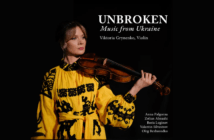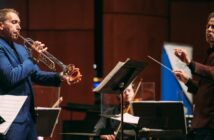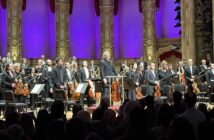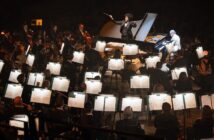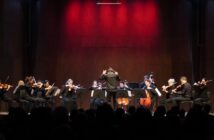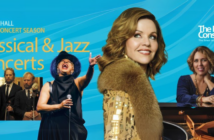
This page is also available in / Cette page est également disponible en:
![]() Francais (French)
Francais (French)
Les Violons du Roy can once again spread their wings as they please after more than 1½ months of a lockdown reinstatement and a few small-scale concerts at Bourgie Hall. Nicolas Altstaedt will be the guest artist in the Un violoncelle par-delà des frontières concert series on May 6 and 7. On May 26 and 28, Les Violons du Roy will join forces with I Musici de Montréal, under the baton of Jean-François Rivest. This concert will bring back collaborations with orchestras and musicians. Before these concerts take place, former conductor Bernard Labadie, whose triumphant return has long been expected, and the Chapelle de Québec chamber choir will present three concerts on April 21, 22, and 24.
Labadie last conducted Handel’s Messiah in December 2019. This time, he will conduct the Mozart Requiem, as he wanted to take a close look at the relationship between the two masterpieces. “The influence of Messiah is in plain view in all contrapuntal writing; this influence is stronger than in works by Bach. For example, I think of the fugal subject in ‘Kyrie’ from Requiem, taken directly from the Messiah chorus ‘And with his stripes.’ The same musical intervals are heard at the start of the ‘Kyrie.’ Mozart was clearly paying tribute to Handel,” said Labadie.
Which Requiem?
The Mozart Requiem is appreciated for its contrapuntal artistry and unfinished character. It has been completed many times, though its completed quality is sometimes open for debate. Labadie much prefers the completed version by Robert Levin, musicologist and great Mozart specialist. “I heard Levin’s version of Requiem for the first time at the Mozart Festival at Stuttgart’s Bach Academy in 1991. I was in the concert hall when Helmuth Rilling conducted this version of Requiem. I was captivated by this version that was more satisfying than other completed or revised versions. Under the circumstances, Levin’s version is the best, as we will never see the completed version by Mozart. The choices Levin made were not only based on an in-depth knowledge of Mozart’s music but also based on musical practice back in the day. It is useful to read the preface in Levin’s version; we might have reservations about the musical performance (which is not my case), though from a musicological and scientific point of view, Levin’s version is unassailable. It is the only version I conduct,” he said.
The same could not be said about the work as completed by Süssmayer, Mozart’s student. “His version is unworthy of Mozart; it is cumbersome and has nothing to do with Mozart. I am not a believer in sudden flashes of genius. The fugal subject in “Hosanna” has great potential. However, Süssmayer did not develop it very well. Perhaps Mozart taught Süssmayer a few compositional skills,” said Labadie.
“Amen” to be explored
The fugal “Amen” that follows the sequence in a Mozart sketch is one of Levin’s original features. “Other specialists have composed a fugue before Levin; however, Levin’s performance is aesthetically more accurate and musically more appealing. Based on letters by Süssmayer, it was long believed that no more material was to be found. A sketch by Mozart once again surfaced with the fugal subject and counter subject without text in the 1960s. Since this sketch was based on a subject of another fugue in the Introit, it could be associated with the Requiem. Here lies one of many thematic connections Mozart made toward the end of his career,” Labadie said.
Requiem: Opera and sacred music
Labadie still admires the Mozart Requiem. “I think of the Requiem as Mozart’s final opera. It could be said there is no other subject more operatic than Mozart, especially when we see how fascinated he was by death through the lens of a few operatic characters—I’m thinking of Don Giovanni, of course. There is no use to think that Mozart was setting his own death to music, as connections between Don Giovanni and Requiem go beyond his death. Just think of the trombones, the key of D minor, and Don Giovanni’s descent to hell that brings us to the Requiem soundscape. It is such an admirable feat to consider that Mozart could make Don Giovanni such an operatic work while paying tribute to sacred music by his predecessors. Unfortunately, this synthesis was left unfinished, but there is a synthesis between the opera and sacred composer, since Mozart composed for the church for much of his life,” he said.
The other Mozart
In addition to this three-concert series, Violons du Roy will present Mozart’s Freemason Meistermusik that includes a male chorus in the middle of the work and Funeral Symphony in C minor, by the unfamiliar composer Joseph Martin Kraus (1756–1792), a Mozart contemporary. These are two original works of the classical repertoire that will be presented for the first time in the history of Les Violons du Roy. “Oddly enough, motifs are similar in both works,” said Labadie. “I am not saying that Kraus was inspired by Mozart, but I see a clear relationship between the two composers. I have decided to present these works back-to-back, connecting the final C major chord in Kraus’s Funeral symphony with the first C minor chord in Mozart’s Meistermusik. Both works deal with the topic of death. It is not hard to make a connection with the Requiem.”
Translation by Dwain Richardson
This page is also available in / Cette page est également disponible en:
![]() Francais (French)
Francais (French)





